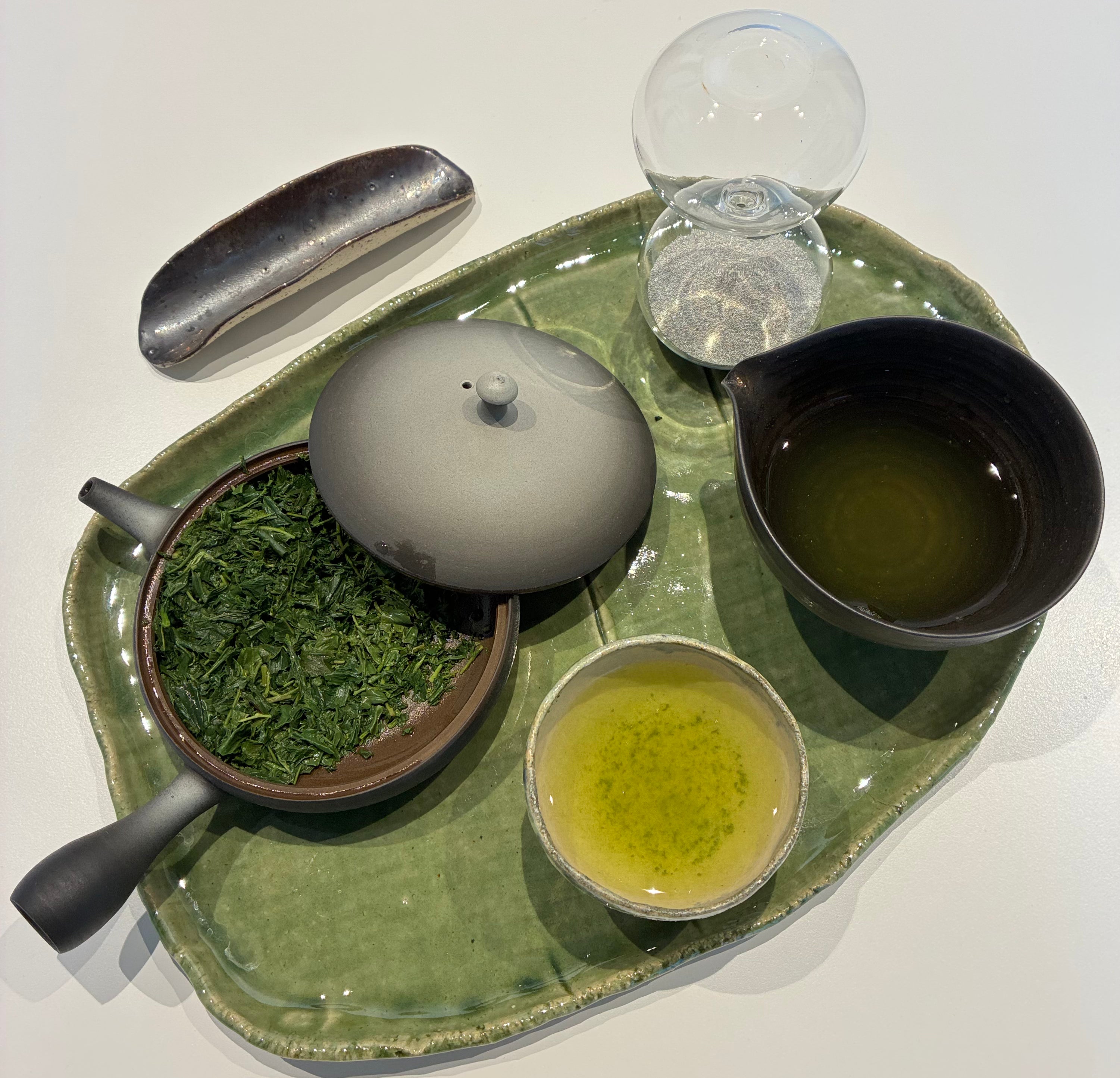How to properly prepare gyokuro
-
I won't hide it. – this is my favorite tea – I adore the rich umami flavor and the delicate process of preparing tea.
Although gyokuro is made in a similar way to sencha, its preparation method is quite different – it uses very little water and a relatively large amount of tea leaves, and the water is not very hot! The lower water temperature draws out the amino acids and prevents the more bitter flavor compounds from developing. – for catechins, and the higher leaf-to-water ratio increases the concentration of sweet compounds, creating a thick, rich, umami-rich drink.
Recommendations for preparing Gyokuro often vary greatly, so here I will only provide a starting point and tips on how to prepare the tea that best suits your taste.
REQUIRED UTENSILS
As for brewing all the tea – gyokuro will be needed teapot and cup. Simple. But not quite. Since gyokuro is usually prepared in small quantities (due to its uniqueness, expensiveness and high caffeine content - you don't need a lot of it), it requires a special teapot. It is a kyusu , hohin or shiboridashi Japanese teapots used for brewing loose leaf tea.
Kyushu – this is a teapot with a handle and a spout. A flatter kyusu would be more suitable for gyokuro tea, while a larger, rounder one would be better – for sencha and other teas. The flatness of the teapot is important – so that the leaves lie horizontally and spread more easily in the water and is important for faster water cooling.
Hohin – a handleless teapot with a strainer inside and a prominent spout for the water to flow out. It is more often used for other loose leaf teas, although it would also be perfect for making larger quantities of gyokuro tea.
The most suitable teapot for brewing gyokuro tea is the shiboridashi teapot. – flatter than a hohin , with a spout, no handle, and usually without any strainer for tea leaves.
Another unmentioned dish - Yuzamashi – a container with a spout for cooling water.
Cup – the smaller, the better – about 20-40 ml capacity. The amount of gyokuro will be small, so larger cups for sencha will probably only be filled a third full.
BOILING TEMPERATURE OF WATER
Water temperature is particularly important for gyokuro tea, as water that is too hot releases the bitter compounds in green tea more quickly. – catechin and caffeine. Sencha is brewed with water at a temperature of 60-80°C, as this tea is grown in the sun and the aim is to extract as many green fruity and floral aromas and flavours as possible. Meanwhile, gyokuro tea is brewed to extract as much rich umami flavour as possible, so the water temperature drops dramatically here. – 40-60°C.
Cooling hot water to this temperature (without a thermometer) requires a bit of juggling with teapots and some mental calculation, but it can become quite an enjoyable part of the ritual.
As a general rule, each time you pour water into an unheated ceramic container, the temperature of the water drops by about 10°C. For example, if you pour freshly boiled water first into a teapot, then into cups, then into a yuzamashi , and finally back into the teapot, the temperature drops to about 65°C. To cool it down even more, you can keep the hot water in the yuzamashi for a little longer – its wide, open surface helps the water cool down faster.
WATER TO TEA RATIO
When brewing gyokuro tea, the general rule is – the more tea herbs, the better. But here, apparently, the only limit is your wallet. – tea is really expensive.
For one serving, I would suggest brewing 5 teas in a 60ml teapot. –6 g of tea leaves – this way we will get a really rich, " thick" umami gyokuro tea. The higher the quality of the gyokuro, the more tea leaves – this is how your cup can become " unbearably" expensive, but definitely worth a try!
Unlike other teas, the amount of water can be slightly increased when brewing a second time (without raising the temperature), and when brewing more times – the water should already be hotter (gradually rising to 70°C).
In any case, if you have gyokuro this is just a first date – I suggest starting with 60 ml of water and 5 –6 g of tea leaves, and later you will decide whether to experiment further with the special umami.
BOILING TIME
Since we aim for the strongest possible flavor when preparing gyokuro, the aging time is much longer than, for example, sencha tea. – it is best to keep 2 for the first and second times you shave –3 minutes. I hold the first pour for 3 minutes and the second for 2 or 2.5 minutes.
FILLING INTO CUPS
If you have prepared gyokuro not only for yourself, then you need to properly pour it into cups. Remember that the first drops from the teapot are the weakest, and the last – the richest. Traditionally in Japan, it is poured into cups little by little, but a much more convenient way is to pour all the tea, down to the last drop, back into a water cooling vessel ( yuzamashi ) and then pour it into cups from there.
In summary – for brewing gyokuro, it is always best to use less water, lower temperature (gyokuro is amazing even melted on ice cubes https://ikigaitea.lt/blogs/receptai/3-straipsnis ), more tea leaves and keep it for longer (the lower the water temperature, the longer you should keep it). Experiment and find the method that suits you best for the tastiest gyokuro!
-


